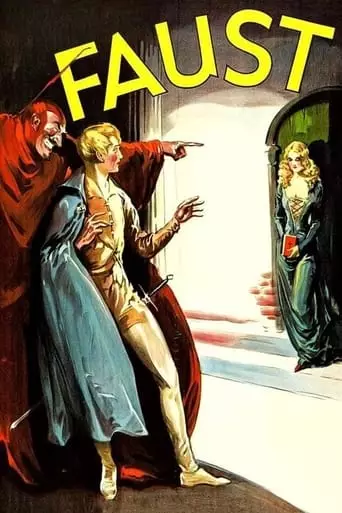
Faust (1926) Watch Online Free
God and Satan war over earth; to settle things, they wager on the soul of Faust, a learned and prayerful alchemist.
Faust (1926), directed by F.W. Murnau, is a visually stunning, silent film based on the legendary German myth of a scholar who makes a pact with the Devil. The story follows Faust (played by Gösta Ekman), an alchemist and scholar, who, disillusioned with both science and religion, agrees to sell his soul to Mephisto (Emil Jannings) in exchange for worldly power, wealth, and knowledge. His initial quest to save a plague-stricken village turns into a downward spiral of indulgence, corruption, and betrayal. As Faust succumbs to temptation, he embarks on a journey filled with seduction, murder, and moral decay. However, his love for Gretchen (Camilla Horn), a pure and innocent woman, leads to his eventual redemption, as he seeks to right his wrongs and find salvation. The climax hinges on the battle between good and evil, and Faust’s ultimate decision to choose love over damnation.
The themes of Faust are deeply rooted in existential questions about the human condition: the struggle between good and evil, the pursuit of knowledge, and the nature of redemption. Murnau’s adaptation focuses on the inner conflict of Faust, who represents the human yearning for meaning and power. His desperate pact with Mephisto symbolizes mankind’s eternal battle with temptation and moral weakness. The film contrasts the bleakness of Faust’s journey with the hope of redemption through love, illustrating that even in the darkest moments, there is a chance for salvation. The visual style of the film enhances these themes, with dramatic lighting and expressionistic sets symbolizing the battle between light and darkness. Mephisto, a character embodying pure evil, often appears in larger-than-life proportions, dwarfing his human counterparts, underscoring his manipulative power over Faust.
Murnau’s use of special effects and innovative cinematography creates an atmosphere of dread and awe. Notable is the dramatic scene in which Mephisto unleashes a storm of plague over a village, his towering, shadowed form spreading darkness. These striking images, along with the symbolic use of color and shadow, make Faust a visually and thematically rich experience. The film’s supernatural elements are presented not as mere fantasy but as integral to the moral and philosophical questions the story raises.
Faust had a profound impact on cinema, influencing both silent and later sound films. Murnau’s masterful use of visual storytelling paved the way for future filmmakers in the horror and fantasy genres. While the film’s initial reception was mixed, with some critics disapproving of its departure from Goethe’s original work and the performances of some actors, Faust eventually gained recognition as one of the most important films in cinematic history. Today, it is celebrated for its artistic achievements, particularly its expressionist style, and continues to inspire filmmakers, particularly those in the realm of fantasy and supernatural cinema.
Watching Faust is a deeply reflective experience. The film’s exploration of the human soul’s struggle with temptation, love, and redemption is likely to evoke both feelings of sorrow and hope. As you watch Faust’s moral downfall and ultimate attempt at redemption, you may feel a sense of awe at the film’s artistic depth and emotional resonance. The contrast between the film’s dark, grim elements and the glimmer of salvation through love leaves viewers with a lingering sense of both unease and redemption. It’s a cinematic journey that will leave you contemplating the balance between good and evil, the price of ambition, and the power of love to heal even the darkest souls
